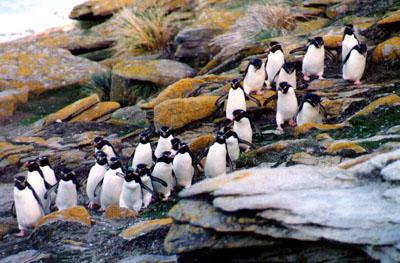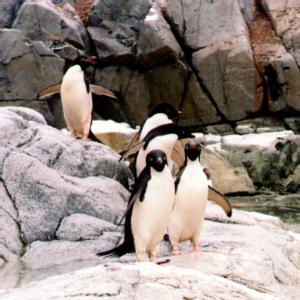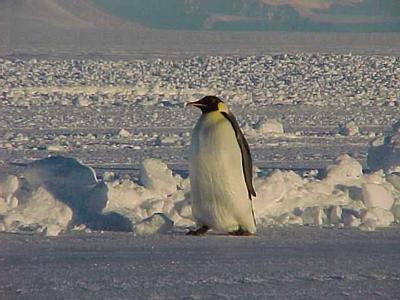10 December, 1999
McMurdo Station, Ross Island Antarctica
Friday
Today was much the same as the other work days. I continued to work on the
gas chromatograph generating the data that Bess and Mark will later analyze.
We are beginning to think about our return to the States. The team is
returning next year to continue their study of Lake Bonney. Much of the
gear that we have used will be kept in storage here at McMurdo. It's
important, also, to check the permits that will allow us to travel with
hazardous and restricted materials. Travel arrangements are being made as
well. I have decided to amend my original plans and will spend next weekend
in Auckland on the North Island. This is, of course, assuming that our
plane departs as scheduled! Do you remember Christchurch? I believe that
all of us share the same sentiment about leaving Antarctica. We miss our
families and want to see them terribly, but we just aren't ready to leave!
ANSWER TO YESTERDAY'S QUESTION: There are 8 kinds of penguins found on
Antarctica and on subantarctic islands. They are Emperor, King, Adelie,
Gentoo, Chinstrap, Rockhopper, Macaroni, and Royal. The Emperor is the
largest penguin standing over a meter high! The male Emperor incubates a
single egg through the cold, dark Antarctic winter. In the Spring, the
female returns from feasting in warmer waters and takes over the rearing of
the chick. Penguins are found on islands such as South Georgia and the
Falklands. My favorite penguin is the Adelie with its bright white eyes! I
haven't seen any penguins because the ice edge is still 30 miles away! A
few have wandered near the ice runway. They have gotten no closer! The
photos that I include here were taken by others fortunate to have seen them
near the Antarctic Peninsula.
TODAY'S QUESTION: It's 2:45 p.m. in Antarctica. What time is it in your
time zone? In what time zone does Antarctica operate?
Sharon
JUST FOR KIDS!!!!!
We are beginning to plan our departure from Antarctica. Some of our
equipment will stay here. We will use it next year. The rest of our gear
is being packed into boxes. We leave next week. It's exciting to know that
soon we will see our loved ones, but it's sad to be leaving Antarctica.
I am still working on the gas samples. I will continue to do this until the
day before we fly home!
ANSWER TO YESTERDAY'S QUESTION: There are 8 kinds of penguins found on
Antarctica and on subantarctic islands. They are Emperor, King, Adelie,
Gentoo, Chinstrap, Rockhopper, Macaroni, and Royal. The Emperor is the
largest penguin. It stands over a meter high! The male Emperor incubates a
single egg through the cold, dark Antarctic winter. In the Spring, the
female returns from feasting in warmer waters and takes over the rearing of
the chick. Penguins are found on islands such as South Georgia and the
Falklands. My favorite penguin is the Adelie with its bright white eyes! I
haven't seen any penguins because the ice edge is still 30 miles away! A
few have wandered near the ice runway. They have gotten no closer! The
photos that I include here were taken by others fortunate to have seen them
near the Antarctic Peninsula.
TODAY'S QUESTION: It's 7:00 p.m. in Antarctica. What time is it in your
time zone? In what time zone does Antarctica operate?
Sharon

Rockhopper penguins are subantarctic. The largest population can be found in the Falkland Islands.

Gentoo penguins can be found on the Antarctic Peninsula and subantarctic islands.

The King penguin is the second largest penguin.

Adelie penguins were named after the wife of French explorer Dumont D'Urville. They can be found on the continent and some of the more southerly subantarctic islands. Adelie penguins have been spotted in recent days near Cape Evans, not far from McMurdo.

The Emperor penguin is the largest of all penguins. During the late summer, Emperors make preparations for incubating their egg through the cold, dark winter.
Contact the TEA in the field at
.
If you cannot connect through your browser, copy the
TEA's e-mail address in the "To:" line of
your favorite e-mail package.
|
